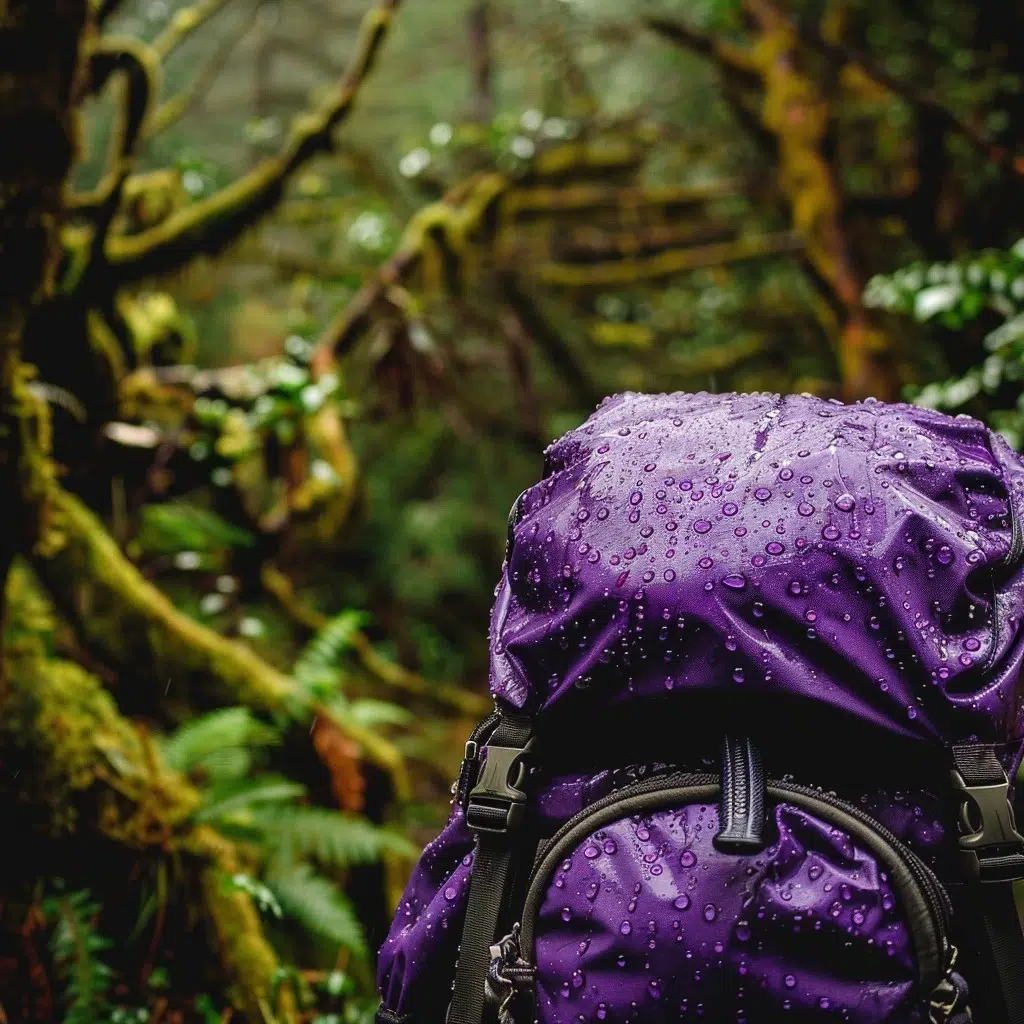The Ultimate Guide to Choosing the Perfect Waterproof Backpack

When it comes to outdoor adventures, daily commutes, or even simple weekend getaways, a waterproof backpack is an essential accessory. It protects your belongings from the elements, ensuring that your gear, electronics, and essentials stay dry, no matter what the weather throws at you. In this comprehensive guide, we delve into the key features, benefits, and top considerations when choosing the perfect waterproof backpack.
Why You Need a Waterproof Backpack
A waterproof backpack is more than just a bag; it’s a safeguard for your belongings. Whether you’re hiking in unpredictable weather, commuting in a rainy city, or simply need a reliable bag for travel, a waterproof backpack offers peace of mind. Waterproof materials prevent moisture from seeping in, protecting your electronics, clothing, and other essentials. In environments where water exposure is inevitable, having a reliable waterproof backpack is not just convenient—it’s necessary.
Key Features to Consider in a Waterproof Backpack
1. Material and Durability
The material of the backpack is the most critical factor in determining its waterproofing capability. PVC, TPU, and nylon are popular materials known for their water-resistant properties. These materials not only repel water but also offer durability, ensuring that the backpack can withstand rough conditions.
2. Seam Sealing
Even the most waterproof materials can fail if the seams are not adequately sealed. Seam sealing involves covering the seams with waterproof tape or using a welding process to prevent water from penetrating through the stitching. This is a feature often found in high-quality waterproof backpacks, making them ideal for heavy rain or water-based activities.
3. Closure Systems
The way a backpack closes is crucial in maintaining its waterproof integrity. Roll-top closures are commonly used in waterproof backpacks, providing a secure, watertight seal. Zipper closures with water-resistant coatings or seals are also effective, though they may require more maintenance to keep their waterproof properties intact.
4. Size and Capacity
Depending on your needs, the size and capacity of the backpack are essential considerations. A 20-30 liter backpack is generally sufficient for daily use or short hikes, while a 40-60 liter backpack might be necessary for extended trips or carrying heavier loads. Ensure that the backpack’s size aligns with your intended use without compromising on its waterproof capabilities.
5. Comfort and Ergonomics
Carrying a backpack for extended periods can be taxing, so comfort is key. Look for backpacks with padded shoulder straps, adjustable chest straps, and back padding. Ergonomic designs help distribute weight evenly, reducing strain on your back and shoulders, which is especially important in a fully-loaded waterproof backpack.
6. Additional Features
Extra features can enhance the functionality of a waterproof backpack. External pockets, hydration system compatibility, and attachment points for gear can be incredibly useful depending on your activities. Reflective elements are also a good addition for those who plan to use the backpack in low-light conditions.
Benefits of Using a Waterproof Backpack
1. Protection from the Elements
The primary benefit of a waterproof backpack is its ability to keep your belongings dry. Whether you’re caught in a sudden downpour or navigating a river crossing, a waterproof backpack ensures that your valuables remain safe from water damage.
2. Versatility
A waterproof backpack is versatile enough to be used in a variety of settings. It’s perfect for outdoor adventures like hiking, camping, and kayaking, but also functions well in urban environments where unexpected weather can strike at any time.
3. Durability
High-quality waterproof backpacks are built to last. The materials used are not only resistant to water but also to tears, abrasions, and general wear and tear. This durability makes them a worthwhile investment for anyone who spends a lot of time outdoors or travels frequently.
4. Peace of Mind
Knowing that your belongings are protected allows you to focus on your activities without worrying about the weather. Whether you’re commuting to work, hiking in the mountains, or exploring new cities, a waterproof backpack provides the confidence that your gear is secure.
Top Waterproof Backpack Recommendations
1. Roll-Top Waterproof Backpacks
Roll-top backpacks are a favorite among outdoor enthusiasts. They offer a simple and effective way to ensure that no water gets inside the bag. The roll-top closure is adjustable, allowing you to compress or expand the backpack as needed. Popular models in this category include the Ortlieb Atrack and Sea to Summit Hydraulic Dry Pack.
2. Zippered Waterproof Backpacks
For those who prefer easy access to their belongings, zippered waterproof backpacks are the way to go. Brands like Patagonia and The North Face offer models with water-resistant zippers that provide quick access without compromising waterproofing.
3. Lightweight Waterproof Backpacks
If you need a backpack for day trips or urban use, a lightweight waterproof backpack might be the best option. These backpacks are designed to be compact and easy to carry while still providing protection against light rain and splashes. The Osprey Ultralight Dry Sack is a great example of a lightweight yet durable waterproof backpack.
4. Heavy-Duty Waterproof Backpacks
For more rugged adventures, heavy-duty waterproof backpacks are essential. These are built to withstand extreme conditions and carry heavier loads. The YETI Panga Backpack is a top choice, known for its robustness and high waterproof rating.
How to Care for Your Waterproof Backpack
1. Cleaning
Keeping your waterproof backpack clean is important for maintaining its waterproof properties. Use a mild soap and warm water to clean the exterior, and avoid using harsh chemicals that could damage the waterproof coating.
2. Storage
When not in use, store your backpack in a cool, dry place. Avoid leaving it in direct sunlight for extended periods, as UV rays can degrade the materials and reduce the waterproofing effectiveness.
3. Repairs and Maintenance
Over time, even the best waterproof backpacks may require maintenance. If the seams or closures start to wear, it’s important to address these issues promptly. Many manufacturers offer repair services, or you can use waterproof seam tape and zipper lubricant to prolong the life of your backpack.
Conclusion
Investing in a high-quality waterproof backpack is a smart decision for anyone who values their belongings and enjoys outdoor activities. With the right combination of materials, design, and features, a waterproof backpack can offer unparalleled protection, versatility, and peace of mind. Whether you’re braving the elements on a hike or simply commuting in unpredictable weather, the right waterproof backpack is an indispensable companion.





